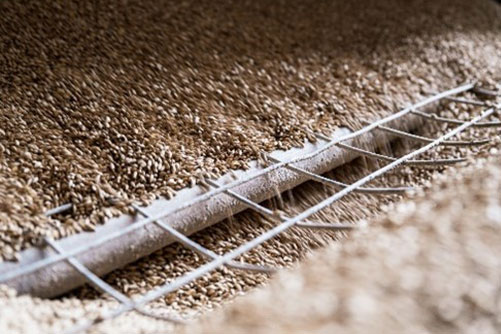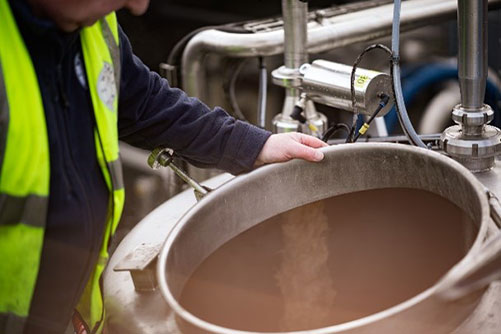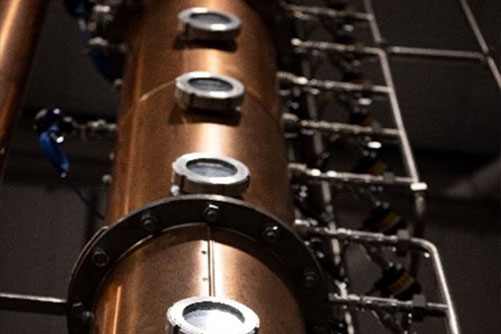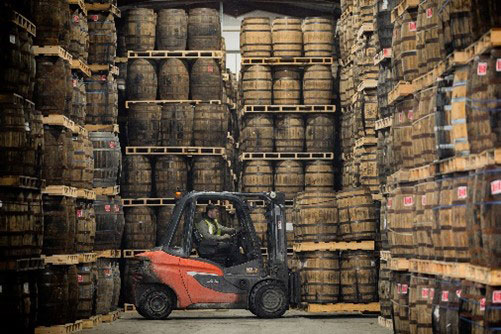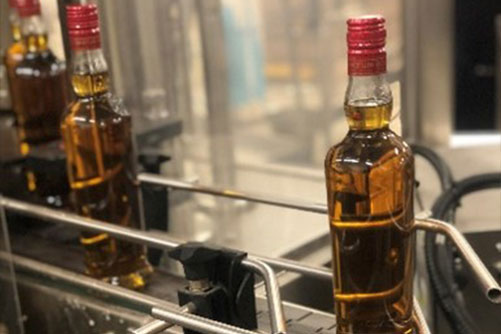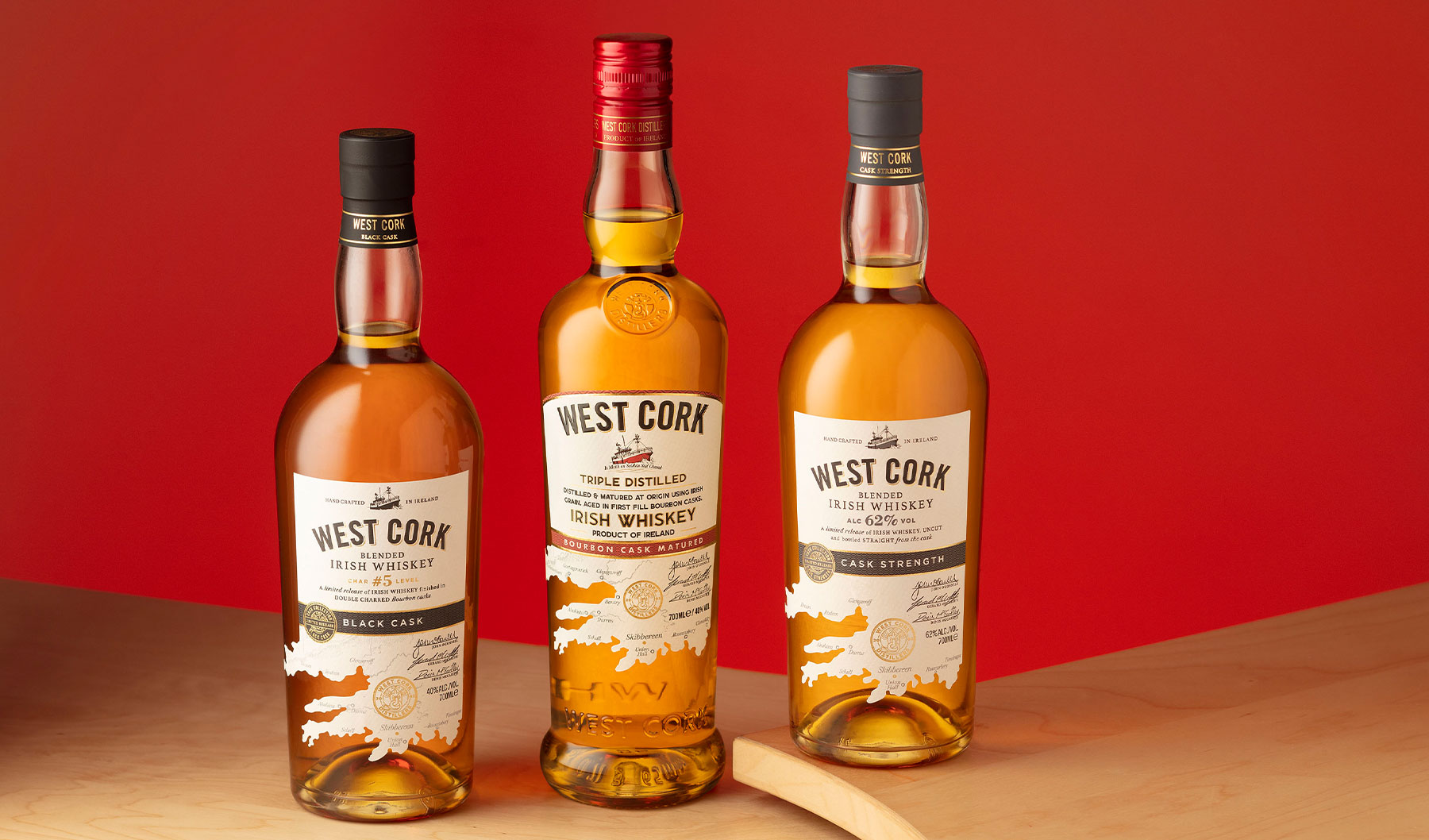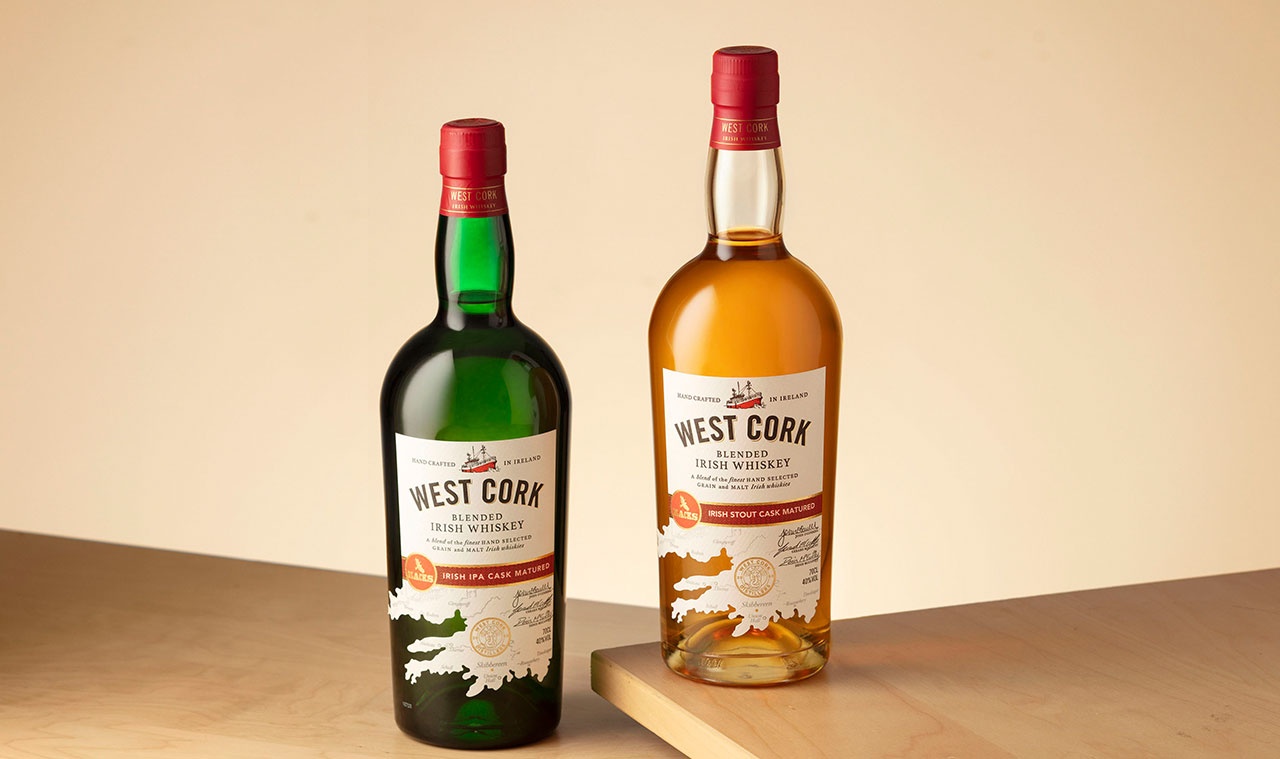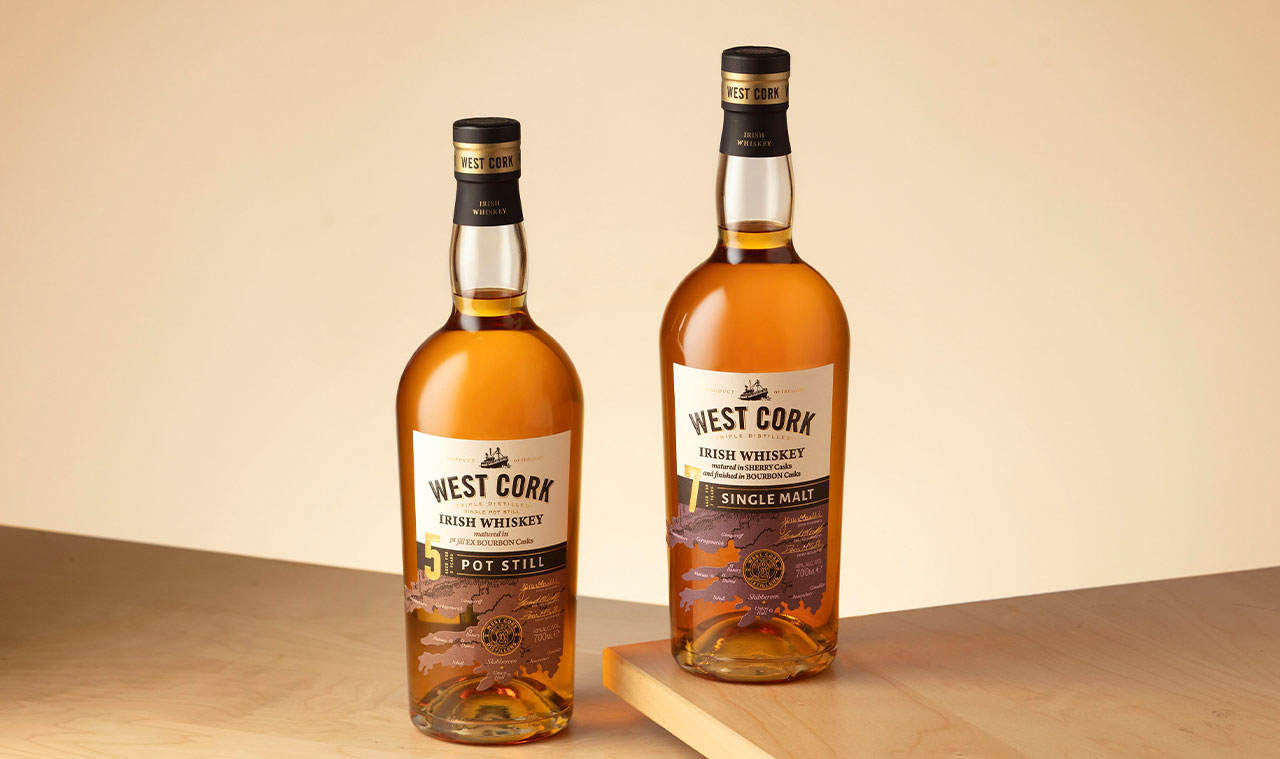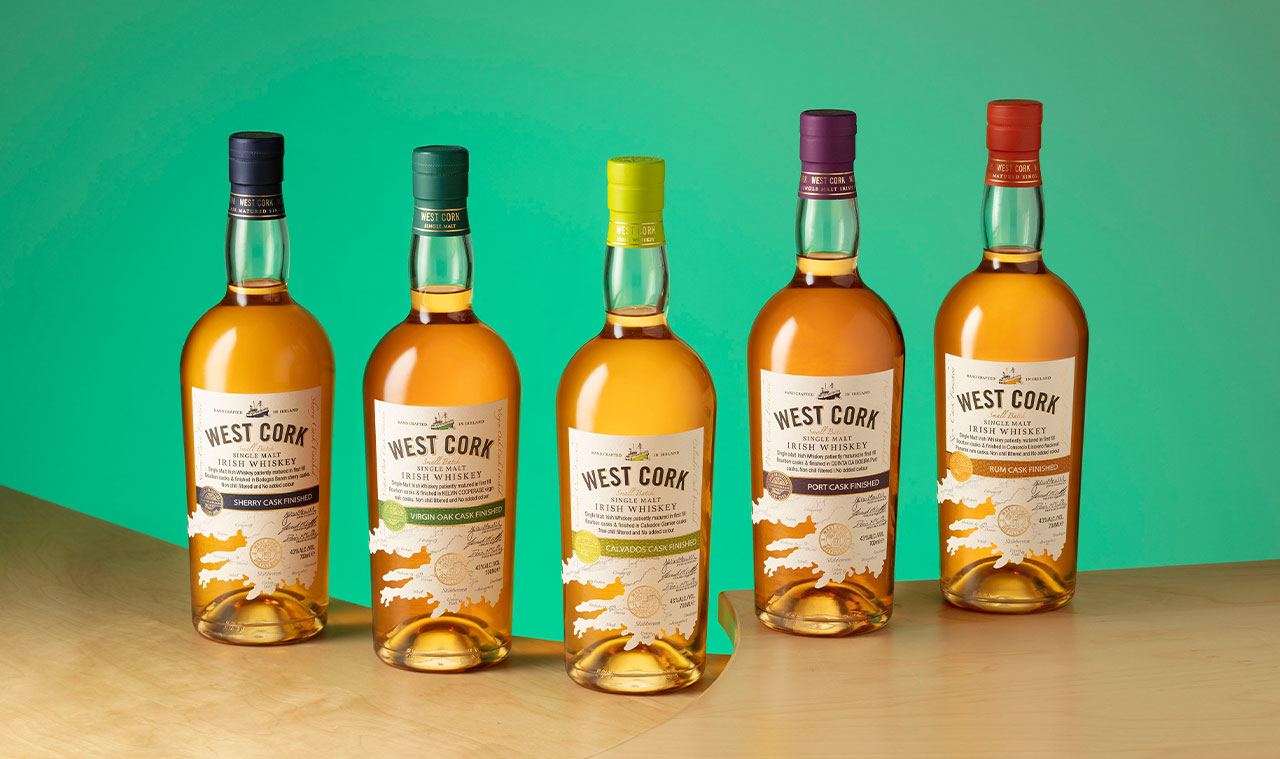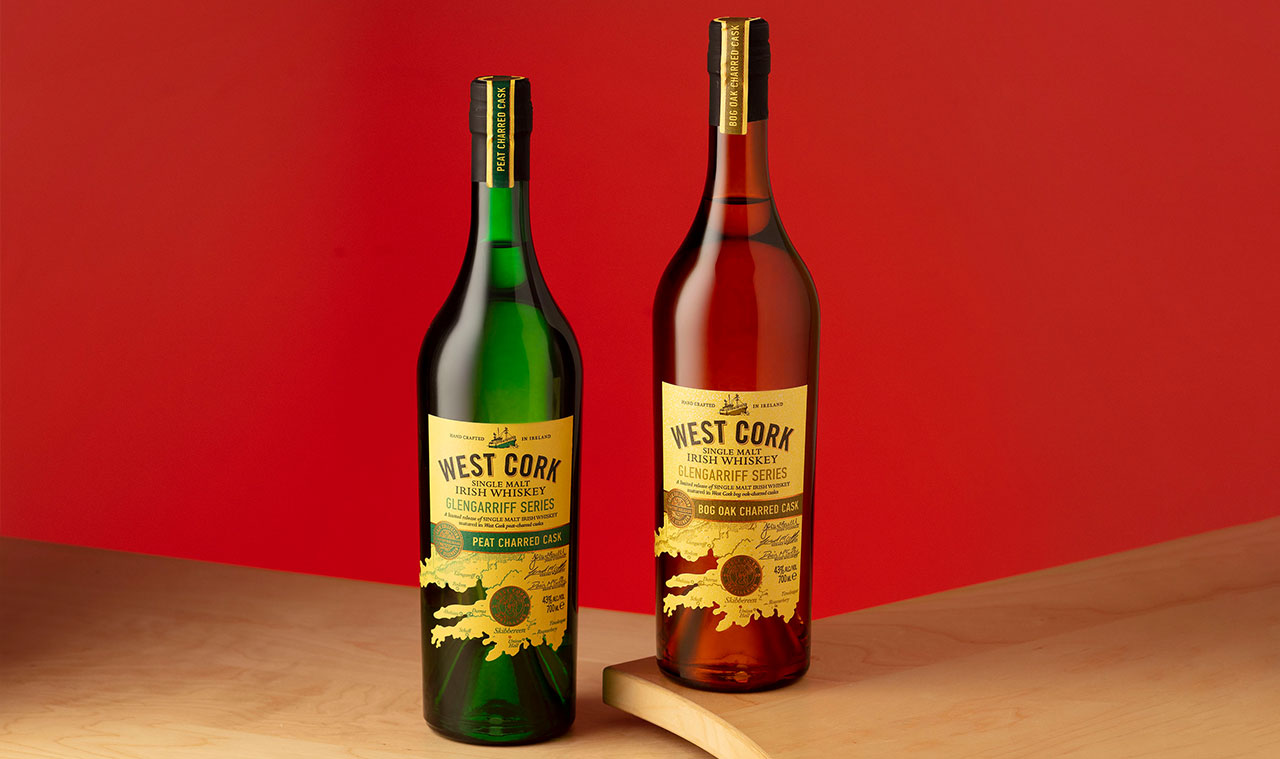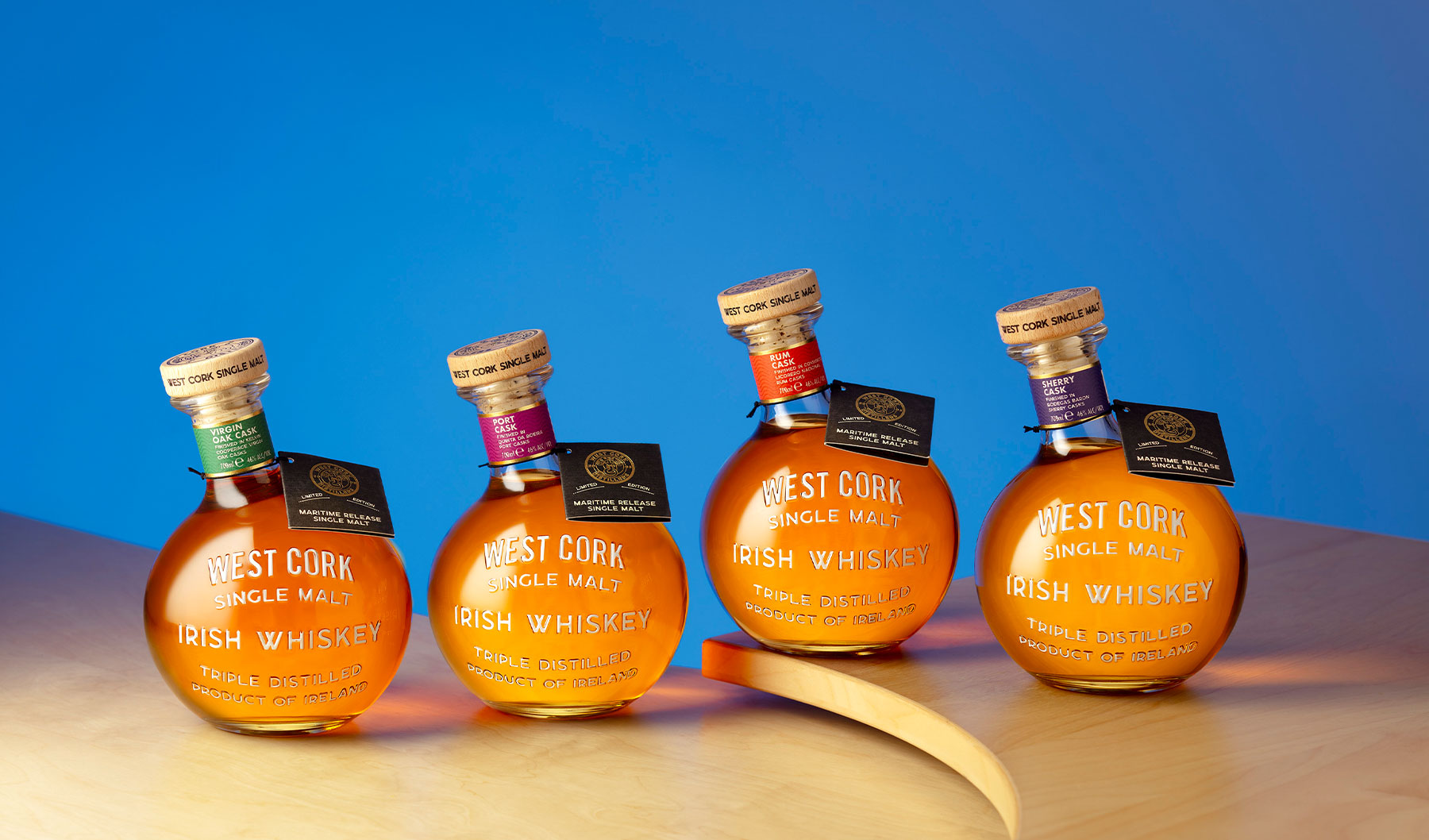Gas Chromatography
This is a physical separation method, mainly used in chemistry. It’s a technique that separates and identifies compounds in a liquid. We use it to get the consistency of our alcohol just right, rather than solely using sensory analysis.
Reverse Osmosis
Usually a process used to purify water and remove anything undesirable, Reverse Osmosis is utilised at the distillery to force water out of particular products. This hugely increases the concentration of our stout and IPA releases, prior to putting them into the cask. It allows us to create impactful, strong flavours way before the liquid begins to recess.
Our Core Range
West Cork Classic Blends
West Cork Classic Blends range consists of Bourbon Cask, Black Cask and Cask Strength Irish Whiskey, matured and aged in bourbon casks. Each bottle of West Cork Irish Whiskey is triple distilled, non-chill filtered, matured and bottled onsite and carefully crafted using the finest of local ingredients.
Beer Series
The beer series at West Cork Irish Whiskey consists of the West Cork IPA Cask and Irish Stout Cask Matured Blended Irish Whiskey. Both whiskeys are blended with grain and malt, aged in first fill bourbon casks and finished in casks that held Blacks of Kinsale IPA or Blacks of Kinsale Stout.
Aged Releases
Celebrating true innovation in Irish Whiskey, the aged releases range consists of a 5 Year Old Single Pot Still Whiskey and a 7 Year Old Single Malt Irish Whiskey.
Single Malt Cask Finishes
The West Cork Cask Finishes is a collection of triple distilled single malt Irish whiskeys. Each whiskey has been aged in first-fill bourbon casks and then finished in casks selected from the finest fortified wines and spirits.
Glengarriff Series
The Glengarriff Series consists of the Peat Charred Cask Finish and the Bog Oak Charred Cask Finish. These triple distilled single malt Irish whiskeys are matured in sherry casks before being treated to a finishing period in peat charred casks and bog oak charred casks.
Maritime Range
Presented in a bespoke Maritime shaped bottle, this unique maritime Irish Whiskey range is inspired by the founders and background of West Cork Irish Whiskey. The Maritime range bottle is a masterfully crafted custom-blown spherical bottle with an off centre spout to aid a smoother pour of whiskey. The range comprises rum cask, port cask, sherry cask and virgin oak cask single malt Irish whiskey.


